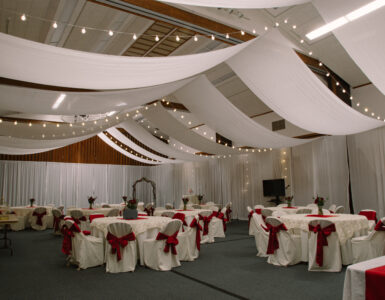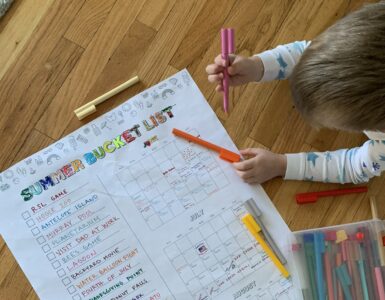Paper piles up fast, cluttering your kitchen counter and your life.
Studio 5 contributor, Kelly Pratt, shows you how to turn those piles of paper
into organized files.
There are three types of paper in every household: active, reference and
archive. Active paper is the paper that currently and continually flows into
your life. Active paper is the stuff of kitchen counter piles.
To create an active paper system, you will need—
. An inbox.
. A desktop or readily accessible filing area and system.
. A reading container.
NOTE: Make sure that your active paper is stored VERTICALLY rather than
horizontally. Vertical files are more accessible!
Inbox
Your inbox can be a paper tray, basket or bin. Make sure that the bin can
hold no more than about one week’s worth of mail. If you use too large a
container, the sheer volume of your paper will be overwhelming and you will
be less motivated to deal with it.
Filing System
Your filing system allows you to separate, store and readily access incoming
mail and other communication. You may choose to use a vertical file box with
file folders, file pockets, a file crate or an accordion file case. The type of
container matters less than its functionality. You want to make sure that you
have enough hanging or storage space to accommodate all your paper. In
order to create a workable system, you should have files for the following
items:
. Every person in your family. These files hold special school papers, paper
that you need for ready reference, etc. This file should be reviewed
occasionally so you can move paper either to the trash or to memorabilia
storage.
. Bills to pay.
. Coupons. Coupons can also be stored in a specialized coupon holder if
you wish.
. Receipts. You may wish to use individual folders within this file to
separate receipts by vendor or store.
. Papers to be filed. This file holds items that will move into your reference
files, such as EOBs, insurance statements, bank statements, paid bills, etc.
. Current projects. For example, if you are finishing your basement or
having work done on your home, this folder will hold all related paperwork
until the project is complete.
. Folders for every month/quarter of the year.
. This week. This folder holds any paper that requires immediate action,
such as permission slips, etc.
. This month. This folder holds papers that require intermediate-term
action. This file should be reviewed weekly, along with your weekly file, so
you can rotate items into your immediate action file.
Reading Container
A reading container is a must for helping to empty your inbox. With a reading
container, magazines and catalogs have a place to go! The key to making this
container work is to put it in an area where you actually sit to read.
Junk Mail Reduction Services
If you want to stem the tide of incoming paper at the source, consider one of
these junk mail reduction services:
www.catalogchoice.org —
Cancels unwanted catalogs.
www.greendimes.com —
Cancels all types of junk mail for a fee. Green Dimes
will plant a tree a month in your name.
www.41pounds.org — Cancels all types of junk mail for a fee ($41 for five
years). One-third of the proceeds go to donations to other non-profit
groups.
www.the-dma.org — Cancels
direct mailing and catalogs. Fastest turn-
around time of all organizations and lowest subscription cost.
Record Retention Guidelines
Several web sites list record retention guidelines to help you manage your
reference and archival paper once you’ve created an active paper system.
Here are two web sites to get you started on your personal records, and you
can Google “record retention guidelines” if you need information on business
record retention guidelines.
. http://www.getorganizeddc.com/pages/articles/doc%20retention.html
.
http://www.sosorganize.net/Documents/Personal%
20Records%20Retention%
20on%20Letterhead.pdf
For more information, you can email Kelly or visit her website.
www.spaceslimitedorganizi
ng.com
kelly@spaceslimitedorgan
izing.com















Add comment